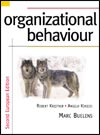 |
1 |  | 
The scenario technique is a speculative, conjectural forecasting tool used to identify future states, given a certain set of environmental conditions. |
|  | A) | True |
|  | B) | False |
 |
 |
2 |  | 
According to the rational model of decision making, after identifying the problem, the next step is to select a solution. |
|  | A) | True |
|  | B) | False |
 |
 |
3 |  | 
The garbage can model of decision making is based on the assumption that decision making follows an orderly series of steps. |
|  | A) | True |
|  | B) | False |
 |
 |
4 |  | 
A nonanalytic decision-making strategy consists of using a simple preformulated rule to make a decision. |
|  | A) | True |
|  | B) | False |
 |
 |
5 |  | 
Ego defense and individual motivations are the key psychological contributors to escalation of commitment. |
|  | A) | True |
|  | B) | False |
 |
 |
6 |  | 
Historical cues, the scenario technique, and relying on the perceptions of others are all ways of |
|  | A) | generating a solution. |
|  | B) | implementing a solution. |
|  | C) | selecting a solution. |
|  | D) | identifying a problem. |
|  | E) | evaluating a solution. |
 |
 |
7 |  | 
When implementing a solution, a common ineffective managerial tendency is to |
|  | A) | waste resources. |
|  | B) | use too much time gaining input from group members. |
|  | C) | reallocate resources across departments and tasks. |
|  | D) | fail to ensure adequate evaluation of the solution. |
|  | E) | not ensure that people understand what needs to be done. |
 |
 |
8 |  | 
________ involves solving problems by choosing a solution that meets some minimum standard of acceptance. |
|  | A) | Optimizing |
|  | B) | Minimizing |
|  | C) | Satisficing |
|  | D) | Maximizing |
|  | E) | Creativity |
 |
 |
9 |  | 
Making a decision by flipping a coin is an example of a(n) ________ decision making strategy. |
|  | A) | aided-analytic |
|  | B) | nonanalytic |
|  | C) | unaided-analytic |
|  | D) | group-aided |
|  | E) | team-aided |
 |
 |
10 |  | 
People with a ________ decision-making style tend to have a low tolerance for ambiguity and are oriented toward task and technical concerns. They are efficient and logical but may be autocratic. |
|  | A) | directive |
|  | B) | analytical |
|  | C) | conceptual |
|  | D) | behavioural |
|  | E) | optimal |
 |
 |
11 |  | 
With respect to escalation of commitment, political forces outside an orgaization's control are an example of a(n) |
|  | A) | psychological determinant. |
|  | B) | social determinant. |
|  | C) | organizational determinant. |
|  | D) | project characteristic. |
|  | E) | contextual determinant. |
 |
 |
12 |  | 
One disadvantage of group-aided decision making is that it results in |
|  | A) | a greater pool of knowledge. |
|  | B) | increased acceptance. |
|  | C) | greater comprehension. |
|  | D) | majority domination. |
|  | E) | domination by a vocal few. |
 |
 |
13 |  | 
According to the Vroom/Yetton/Jago model, the ________ decision-making style involves sharing the problem with subordinates as a group, collectively obtaining their ideas and suggestions, then making a decision that may or may not reflect the subordinate's influence. |
|  | A) | AI |
|  | B) | AII |
|  | C) | CI |
|  | D) | CII |
|  | E) | GII |
 |
 |
14 |  | 
________ is the process of developing something new or unique. |
|  | A) | Creativity |
|  | B) | Problem solving |
|  | C) | Decision making |
|  | D) | Management |
|  | E) | Participative management |
 |
 |
15 |  | 
Which of the following is the correct sequence of stages in the creative process? |
|  | A) | Concentration, preparation, illumination, incubation, verification. |
|  | B) | Preparation, concentration, incubation, illumination, verification. |
|  | C) | Preparation, concentration, verification, incubation, illumination. |
|  | D) | Incubation, concentration, preparation, illumination, verification. |
|  | E) | Concentration, preparation, verification, illumination, incubation. |
 |




 2002 A McGraw-Hill Online Learning Centre
2002 A McGraw-Hill Online Learning Centre